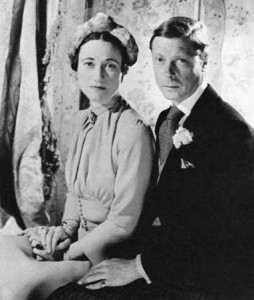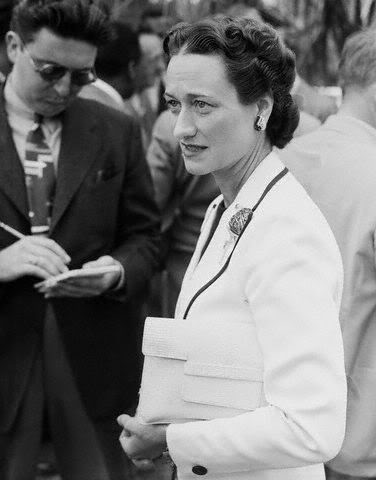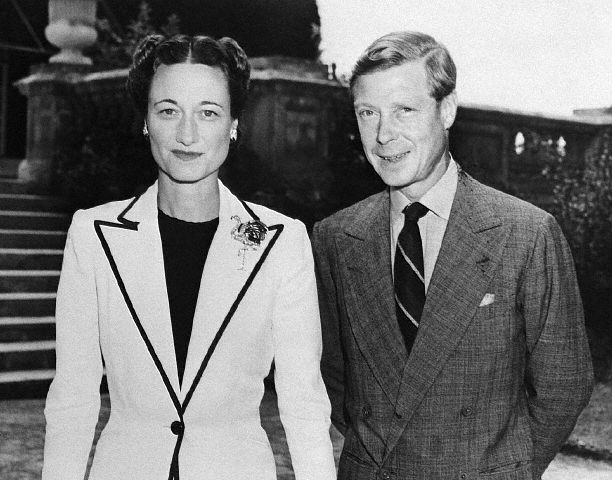The Duke Of Windsor’s 1940 Bermuda Detour
 Four years after he had renounced his throne for “the woman I love”, the Duke of Windsor arrived in Bermuda in August, 1940 on an unscheduled trip hastily organised by British Prime Minister Winston Churchill intended to prevent the former king and his American-born wife from setting foot on US soil.
Four years after he had renounced his throne for “the woman I love”, the Duke of Windsor arrived in Bermuda in August, 1940 on an unscheduled trip hastily organised by British Prime Minister Winston Churchill intended to prevent the former king and his American-born wife from setting foot on US soil.
It was the former Edward VIII’s third time on the island — previously he had paid the first official Royal visit to Bermuda in 1920 when he laid the cornerstone of the Cenotaph and returned in 1931 while en route to Brazil to open a British industrial exhibition.
The 1940 layover proved to be particularly awkward both for the Duke and his Bermuda hosts.
When his father George V died in early 1936, Edward [1894-1972] — then Prince of Wales — succeeded him.
From the very outset of his short reign, he showed impatience with court protocol and British politicians were concerned by his apparent disregard for established constitutional conventions.
Only months into his reign, he caused a constitutional crisis by proposing marriage to the American socialite Wallis Simpson [1896-1986], who had divorced her first husband and was seeking a divorce from her second.
Choosing not to end his relationship with Mrs. Simpson, Edward abdicated. He was succeeded by his younger brother Albert, who chose the regal name George VI.
With a reign of 326 days, Edward was one of the shortest-reigning monarchs in British history. He was never crowned.
After his abdication, he was given the title Duke of Windsor and married Mrs. Simpson in France on June 3, 1937 after her second divorce became final.
Following the outbreak of the Second World War [1939-1945], the former monarch and his wife left their self-imposed exile in France and relocated to neutral Portugal.
Politically naive, the Duke was routinely courted by Nazi agents — some of whom suggested he would be re-installed as a puppet king if the Germans conquered Britain — and he was also given to making defeatist statements about the UK military’s prospects of prevailing against Berlin’s powerful and relentless war machine.
The British wartime Cabinet determined to diminish the Duke’s ongoing propaganda value to the Nazi regime by appointing him Governor of the distant Bahamas.
Sourly referring to the Bahamas as “a third-rate colony”, the Duke reluctantly accepted the appointment.
“Whilst his acceptance was something of a relief to the British, the anxiety now was that the couple would find some way to make a detour via the United States where they were still very popular,” said one biographer. “Such a visit would be a disaster given the isolationist tendencies still prevailing there and the thought of the damage that could be done to the British cause created night terrors among the denizens of Whitehall …
“Arrangements were made [at the Cabinet level] to transport the Royal couple by the Export Lines vessel ‘Excalibur’ as far as Bermuda from whence they would be transferred to another ship for the final leg to the Bahamas.”
The Duchess of Windsor meets the press in the gardens of Bermuda’s Government House
The first time the couple had set foot on British soil since leaving England in 1936, the week-long Bermuda stopover was not an unqualified success for the Duke and Duchess.
“On the ‘Excalibur’s’ arrival, I went out by launch and greeted the Duke and Duchess,” one-time Government House ADC Frank Giles recalled in his 1986 memoirs. “… A full-scale greetings ceremony had been laid on for the visitors when they landed from the launch at the [Royal Bermuda] Yacht Club.
“The Duke, not surprisingly, carried out his inspection and did all that was required of him in a manner made perfect by a lifetime of training. But his brow darkened when he saw what he could not avoid seeing: the failure of [any] of the greeting wives to curtsey to the Duchess.”
Denied the courtesy title “Your Royal Highness” by Buckingham Palace when she had married the Duke, orders had been received from London that the former Mrs. Simpson was not to be accorded the traditional forms of etiquette used when greeting a member of the Royal Family.
Later that same day the Duke confronted Frank Giles — who went on to a distinguished post-war career in British journalism — to complain about what he perceived as a deliberate snub to his wife.
“Red-hot, indeed, were my sensations when, just after we arrived at Government House from the landing ceremonies, the Duke appeared in my office where I was busily catching up on deciphering [coded telexes from London],” he recounted. “He was still smarting from the discourtesy [as he saw it] shown to his wife. ‘Who ordered this?’ he asked me, angrily …
“Without saying anything I reached into a file of deciphered cables and handed him the one we had received from London, giving instructions on etiquette and modes of address. The Duke, it said, should be accorded a half-curtsey, but not the Duchess, who should be addressed as ‘Your Grace’ …
“The Duke read the cable, uttered a wordless expression of disgust and turned on his heel.”
The Duke and Duchess of Windsor in Bermuda, August, 1940
Generally unimpressed by the Duke, Mr. Giles developed a quiet admiration for the Duchess of Windsor during the times they spent together in Bermuda.
“She is a very clever woman,” he recorded in notes he made at shortly after the couple departed Bermuda. “… She is not intrinsically beautiful or handsome but she has a good complexion, regular features and a beautiful figure.
“More than all the charm of her physical appearance, though, is her manner: she has, to an infinite degree, that really great gift of making you feel that you are the very person whom she has been waiting all her life to meet.
“With old and young and clever and stupid alike she exercises this charm and during the week she was here, during which she met a number of people, I never saw anyone who could resist the spell — they were all delighted and intrigued.
“… She is never anything but stately, and when she had to wave to the crowds on her arrival, and subsequently whenever we drove through [Hamilton], she did it with ease and charm and grace which suggested that she had been at it all her life.”
Mr. Giles said it was fascinating to watch the world’s most famous couple at close quarters and see the interplay of their very different personalities.
“He is more in love with her than she is with him,” he recorded in his notes, adding that the Duchess had a “watchful, almost maternal” devotion to her husband.
The former king unwittingly confirmed Mr. Giles’ assessment of the relationship’s dynamic when he returned from a shopping expedition in Hamilton with a new pair of swimming trunks.
“It’s I who wear the shorts in this family, you know,” he told the ADC.



